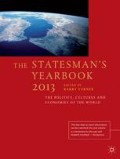Abstract
Vanuatu occupies the group of islands formerly known as the New Hebrides, in the southwestern Pacific Ocean. Capt. Bligh and his companions, cast adrift by the Bounty mutineers, sailed through part of the island group in 1789. Sandalwood merchants and European missionaries came to the islands in the mid-19th century and were then followed by cotton planters—mostly French and British—in 1868. In response to Australian calls to annexe the islands, Britain and France agreed on joint supervision. Joint sovereignty was held over the indigenous Melanesian people but each nation retained responsibility for its own nationals according to a protocol of 1914. The island group escaped Japanese invasion during the Second World War and became an Allied base. On 30 July 1980 New Hebrides became an independent nation under the name of Vanuatu, meaning ‘Our Land Forever’.
Further Reading
Miles, W. F. S., Bridging Mental Boundaries in a Postcolonial Microcosm: Identity and Development in Vanuatu. 1987
National Statistical Office: Vanuatu Statistics Office, Private Mail Bag 019, Port Vila.
Website: http://www.spc.int/prism/country/vu/stats
Editor information
Copyright information
© 2012 Palgrave Macmillan, a division of Macmillan Publishers Limited
About this chapter
Cite this chapter
Turner, B. (2012). Vanuatu. In: Turner, B. (eds) The Statesman’s Yearbook. The Statesman’s Yearbook. Palgrave Macmillan, London. https://doi.org/10.1007/978-1-349-59541-9_347
Download citation
DOI: https://doi.org/10.1007/978-1-349-59541-9_347
Publisher Name: Palgrave Macmillan, London
Print ISBN: 978-0-230-36009-9
Online ISBN: 978-1-349-59541-9
eBook Packages: Palgrave Political & Intern. Studies CollectionPolitical Science and International Studies (R0)

